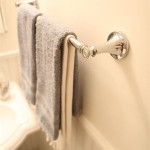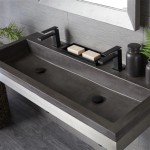How To Replace a Bathroom Sink and Faucet
Replacing a bathroom sink and faucet can significantly enhance the aesthetic and functionality of a bathroom. This comprehensive guide outlines the necessary steps and considerations for a successful installation.
Tools and Materials: Before beginning, gather the required tools and materials. This includes a new sink and faucet, basin wrench, adjustable wrench, plumber's putty, silicone caulk, Teflon tape, channel-lock pliers, screwdriver set, bucket, towels, safety glasses, and work gloves.
Shutting off the Water Supply: Locate the shut-off valves under the sink. Turn the hot and cold water valves clockwise to shut off the water supply. Turn on the faucet to release any remaining water pressure. Place a bucket under the sink to catch any dripping water.
Disconnecting the Old Faucet: Use the basin wrench to disconnect the supply lines from the old faucet. The supply lines are connected to the shut-off valves. Loosen the nuts connecting the faucet to the sink from underneath the sink. If present, remove the lift rod and drain stopper. Lift the old faucet out of the sink.
Removing the Old Sink: Depending on the sink type, it may be secured with clips or caulk. For sinks secured with clips, loosen the clips underneath the sink. For sinks secured with caulk, carefully cut through the caulk around the rim of the sink using a utility knife. Carefully lift the old sink out of the countertop.
Preparing the New Sink: Clean the countertop surface where the old sink was located. If installing a drop-in sink, apply a bead of plumber's putty around the sink's rim. If installing an undermount sink, follow the manufacturer's instructions for applying silicone sealant.
Installing the New Sink: Carefully position the new sink into the countertop opening. For drop-in sinks, press the sink firmly into the countertop to create a seal with the plumber's putty. For undermount sinks, secure the sink to the countertop from underneath according to the manufacturer's instructions. Clean any excess putty or sealant.
Connecting the New Faucet: Follow the manufacturer's instructions for assembling the new faucet. Insert the faucet into the designated holes in the new sink. Secure the faucet from underneath the sink using the provided mounting hardware.
Connecting the Supply Lines: Connect the supply lines to the corresponding inlets on the new faucet. Use Teflon tape on the threads of the supply line connections to prevent leaks. Tighten the connections with an adjustable wrench. Be careful not to overtighten.
Connecting the Drain: Install the drain assembly according to the manufacturer's instructions. This typically involves connecting the drain flange, tailpiece, and P-trap. Ensure all connections are tight and properly sealed.
Testing for Leaks: Turn the water supply back on slowly. Check all connections, including the supply lines, faucet base, and drain, for leaks. If any leaks are detected, tighten the connections or reapply sealant as needed.
Applying Silicone Caulk: Apply a bead of silicone caulk around the edge of the sink where it meets the countertop. This creates a watertight seal and prevents water from seeping underneath the sink.
Final Checks: Run the hot and cold water to ensure the faucet is functioning correctly. Check the drain for proper drainage. Wipe down the sink and surrounding area.
Maintenance Tips: Regularly clean the sink and faucet with a mild cleanser. Avoid using abrasive cleaners that can scratch the finish. Periodically inspect the supply lines and drain for leaks.
Variations for Different Sink Types: The specific steps may vary slightly depending on the type of sink being installed. Consult the manufacturer's instructions for specific guidance on installing vessel sinks, pedestal sinks, or wall-mounted sinks.
Seeking Professional Assistance: While replacing a sink and faucet can be a manageable DIY project, complex installations may require the expertise of a licensed plumber. Contact a professional if you encounter difficulties or are unsure about any aspect of the installation process.
Safety Precautions: Always wear safety glasses and work gloves while working with plumbing fixtures. Take care when working under the sink to avoid injury. If working with older plumbing, be aware of the potential for lead exposure and take appropriate precautions.
Disposal of Old Fixtures: Dispose of the old sink and faucet according to local regulations. Some municipalities may have specific guidelines for disposing of plumbing fixtures.

Diy How To Replace A Bathroom Sink Faucet Remove Install

How To Replace A Bathroom Faucet Home Repair Tutor

How To Replace A Bathroom Faucet Tinged Blue

Replacing A Bathroom Faucet Fine Homebuilding

How Do I Replace Bathroom Sink Faucet Handles Cleaning More

How To Remove And Install A Bathroom Faucet

How To Remove And Install A Bathroom Faucet

Bathroom Faucet Replacement For Beginners Making Maanita

How To Install A Bathroom Sink Step By Guide

Replace Vanity Top And Faucet Diy Network







